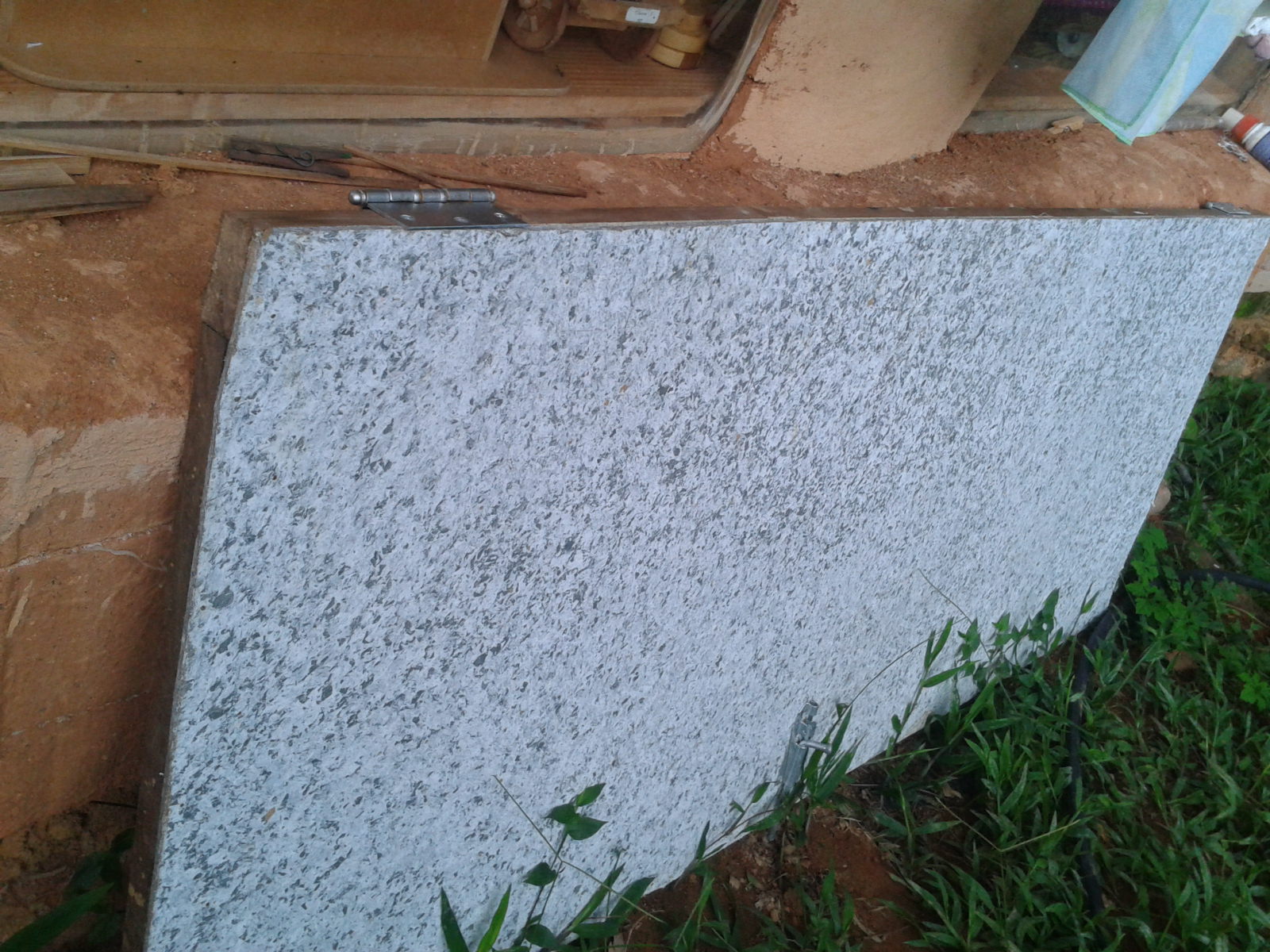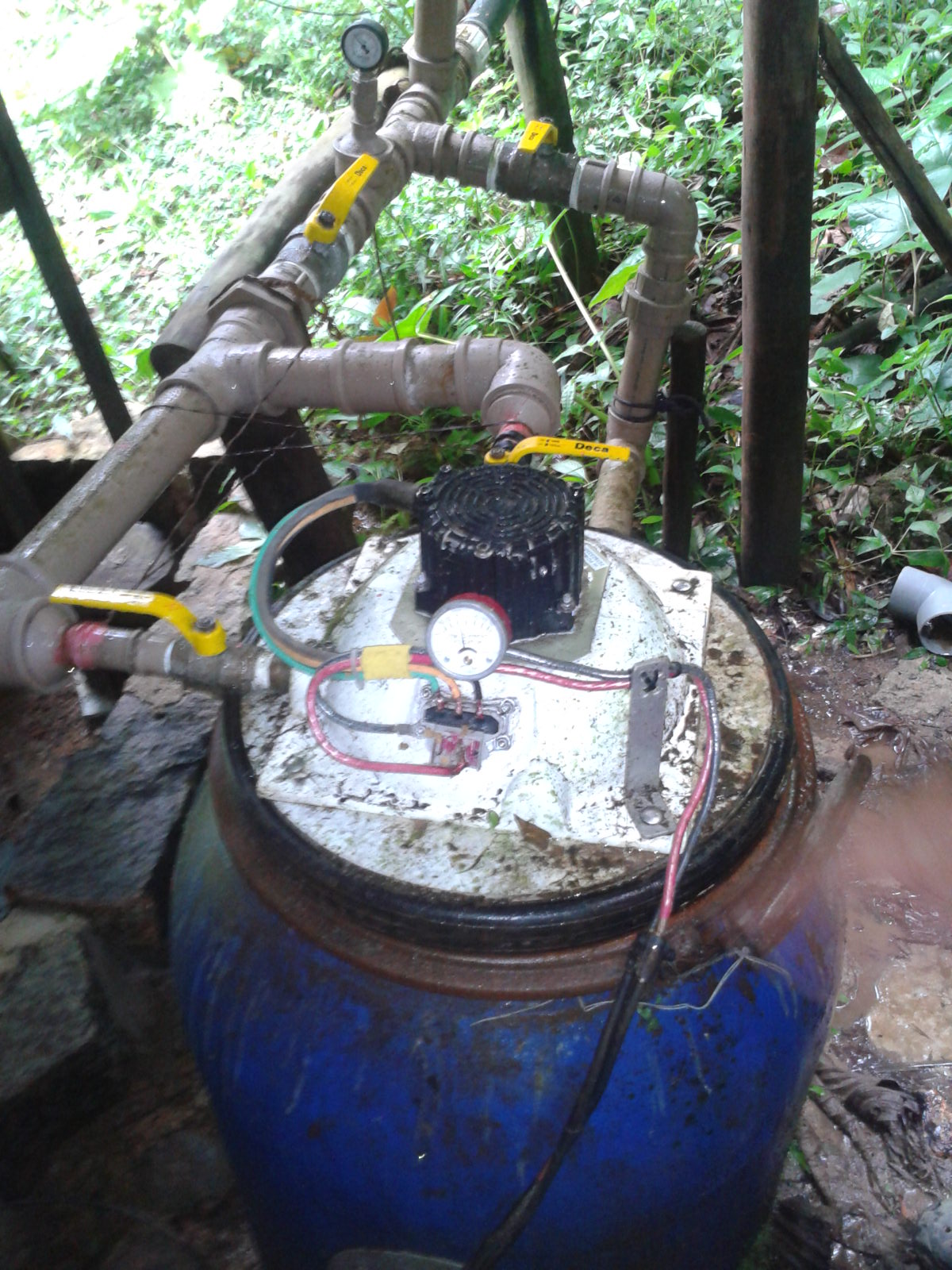We visited IPEMA – Institute of Permaculture and Eco-village of the Atlantic Rainforest. The center is an example of the growing energy and insight that is manifesting itself as practical projects and organisations working towards sustainability in Brazil. Combining permaculture and eco-village thinking, the center has made huge headway in creating housing of 100% natural materials powered by renewable energy, and at the same time inspired hundreds of course participants.
We were guided around by Marcelo, who started 12 years ago after visiting the permaculture institute in Australia. He bought this parcel of land with about half a dozen friends and started building and teaching permaculture on the site. The land is 50 hectares, but lies within the state park. Regulations require they can only use 10 hectares of the 50 to build on and cultivate.
The site houses both the offices and teaching rooms of the Institute and the residential village.

A lot of the buildings are works in progress, improved each time a natural building course is held on the property. The main activities are courses in natural building and permaculture. They have about 30 participants at any one time and run one or two courses a month.
Housing
The extreme climate (100% humidity and more rain than the Amazon) explains much of the design and construction of the buildings. Most of the houses have steep roofs to handle the rainfall.

Roofs are covered in corrugated sheeting made from recycled toothpaste tubes, a material which is used quite extensively as sheets in in other parts of the buildings.
Says Marecello “We always get the roof up first. Then we can build out of the rain”
“We don’t use adobe as the climate, extremely humid as it is, means it just crumbles.”


Food
A lot of food is available just by picking what is growing naturally: bananas, pineapple, cacao, jucara, and several types of nuts. Just now the food production has not been fully developed. They are trying two approaches, one of composting and creating food beds, the other is food forestry.
The food forest area close to the communal meeting room has been going several years. The trees provide shade that prevents the grass from growing (which otherwise in this country smothers everything). They have been cutting the forest back frequently because of the speed of growth. This area is amazingly productive: masses of sunshine, heat and water create the ideal growing conditions, explaining some of the appeal of the Atlantic Rainforest area as a place to establish an eco-village. (The sub-tropical Atlantic rainforest is not to be confused with the tropical rainforest of the Amazon).

Water
The main source of water is the two rivers above the property, but they are avid collectors of rainwater, after running off the gutter the water passes a simple net filter and goes into the holding cistern. The river water is purified in a simple filter before drinking.

Waste water.
The main source of waste water is from the communal kitchen. The grey water is led over a bed of stones that acts as a biological filter. From there, the water goes into a small pond before being led from the property back into the river.
Electricity

A pipe runs from a waterfall above the property in 3cm pipes down to a generator housed in a plastic drum. The generator is connected to several batteries via a converter. The batteries supply 12 volt dc to the property.
Says Marcello ”people wanted us to bring mains electricity to the site and I resisted, even being called extremist at one point.”
But Marcello points out that people are happy with the arrangement and the whole system works well, they have more electricity than they need.
Energy for cooking
The communal kitchen is well-equipped with running water, a rational wood-fired stove and a gas stove.
Toilets
The site is served by simple dry toilets, which collect the waste in buckets and the buckets are emptied at regular intervals.
“We don’t use urine separation as in this climate the urine collecting basin starts to smell badly after only a short time,” says Marcello.
General impressions
I loved the creativity of the buildings, the natural feel of the rounded cob walls and the effects of putting glass bottles in the walls.

Having a totally productive site has its drawbacks of course, trees grow so fast the village is easily encroached by the forest which can feel overpowering. And then there are the snakes…
But generally you have to admire Marcelo, who has two small children living on the site, in pressing on with developing the village and centre and inspiring many others with courses and by just getting on with it.
Visit the website at http://ipea.com.br
Leave a Reply